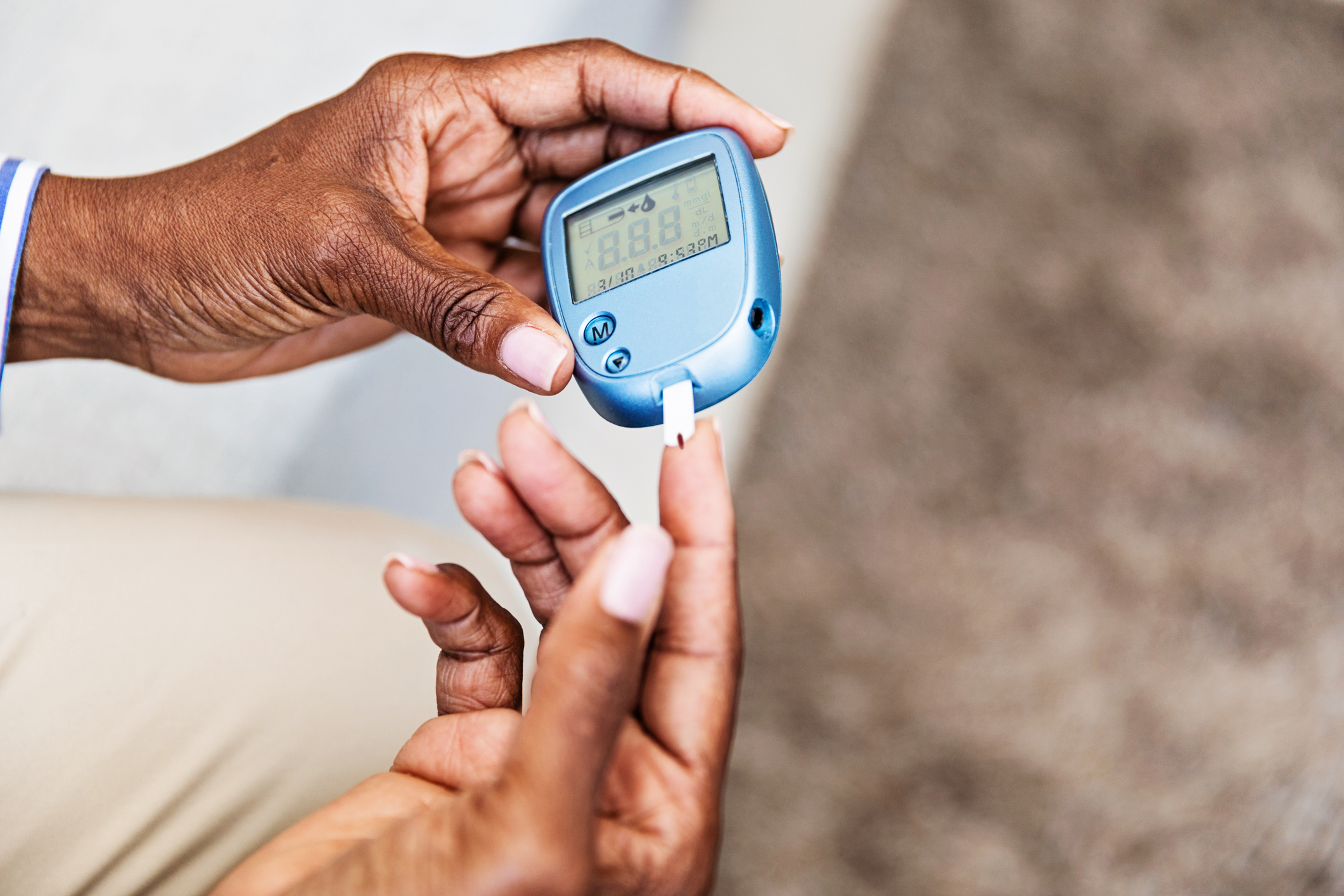Nutrition is one of the key elements to living a healthy lifestyle and is particularly important for persons living with diabetes. It is one of the main factors that can affect a person’s quality of life. While a diabetic patient may be eating at least three meals every day, the nutritional value of the food is very important to consider. Another important factor to consider is where people live. There are certain areas where people live that makes them disadvantaged when it comes to having access to healthy food.
Food deserts are defined as “low-income communities with limited access to healthy food”.1 Food deserts frequently include neighborhoods with public housing developments.2 Even though living in a food desert can result in food insecurity3, food deserts are different from food insecurity, which is defined as “a disruption of eating patterns because of a lack of money or resources”.4 Low-income neighborhoods often lack full-service grocery stores and farmers’ markets where residents can buy a variety of high-quality fruits, vegetables, and low-fat foods.5 Some Health centers that are in or immediately accessible to public housing developments are located within food deserts.6
Approximately 60.5% of counties with Public Housing Primary Care (PHPC) Health Centers have diabetes rates that are higher than the national average.7 This is important to note because public housing residents are more likely8 to have diabetes than the general population based on a report from the U.S. Department of Housing and Urban Development (HUD).9 The report shows that individuals who receive HUD assistance are more likely to have chronic health conditions such as diabetes and cardiovascular disease and are higher utilizers of health care than the rest of the U.S. population, even more so than low-income renters.
Since there are some public housing developments that are in food desert areas, the ability to obtain healthy food to prevent or manage diabetes is more difficult for public housing residents when compared to the general population. As a result, living in a food desert area can have adverse effects on public housing residents living with diabetes.
Some adverse effects that food deserts have on public housing residents living with diabetes include:
Increased A1C
Nationally, about 18% of patients with diabetes have A1C levels greater than 9 compared to 32% of diabetic patients seen at PHPC Health Centers.10 Some contributions to the likelihood of someone having diabetes include lack of exercise, poor management of diet, and smoking. Food deserts can contribute to increased A1C since food deserts are in low-income communities like public housing developments. With that being said, public housing residents are more likely to purchase cheaper and readily available foods.11
Increased reliability on carbohydrate rich foods, which can contribute to obesity
Carbohydrate rich foods, such as fast food and other cheaper and readily available foods, can make it harder to manage diabetes.12 One example of this is the fact that the average fast food meal has 836 calories.13 Since fast food has plenty of calories and little to no nutritional value, this could potentially increase one’s blood sugar. This is important to note because in food deserts, there are few to no options available for affordable healthy food with high nutritional value. Public housing residents in food deserts do not have enough access to grocery stores. Groceries can also be too expensive for public housing residents living in food deserts. With that being said, affordability is very important when considering food deserts. More than 21% of public housing residents fall into HUD’s “Very Low Income” category, with an income of less than 50% of the national median. This can make public housing residents living in food deserts more likely to purchase cheaper and processed foods, therefore being overweight or obese and develop type 2 diabetes.
Higher risk of increased blood pressure and cardiovascular disease
Cardiovascular disease is the most common cause of death in diabetic patients14, therefore making public housing residents more likely to have cardiovascular disease due to the increased diabetes rate amongst public housing residents when compared to the nation. According to the American Diabetes Association, nearly 1 in 3 American adults have high blood pressure, and 2 out of 3 people with diabetes report having high blood pressure or take prescription medications to lower their blood pressure.15 Diabetic patients are twice as likely to have higher blood pressure and cardiovascular disease.16 One study indicated that residing in a food desert was associated with higher risk of incident heart attacks and deaths among patients with cardiovascular disease and this association was largely driven by area income instead of access to healthy foods.17
Listed below are some solutions that health centers can adapt or have adapted to help mitigate the issue of food deserts in public housing communities:
- Add more grocery stores
As a means of addressing issues within food deserts, Lower Lights Christian Health Center, a Health Center in Columbus, Ohio, opened a non-profit grocery store named Jubilee Market and Café, in Franklinton, Ohio, where there had not been a grocery store in years.18 - Create community gardens
Williamson Health and Wellness Center, a health center in Williamson, West Virginia, oversees various initiatives to address food deserts in the area. Ramella Park Community Garden of Eatin’ is a community garden located in Williamson directly across from a low-income housing development.19 Residents can rent a raised bed to grow their own produce. La Maestra Community Health Centers20 located in San Diego,California, and TCA Health located in Chicago, Illinois21, have also established their own community gardens. - Establish a mobile food market
Brockton Neighborhood Health Center, a health center located in Brockton, Massachusetts, partners with Stonehill College. Stonehill College has a campus farm, and they give produce to the health center during the summer months to sell.22This mobile market provides fresh produce at low cost to patients at the health center.23
Since public housing residents are more susceptible to diabetes when compared to other groups, there are many different things to consider in the field of diabetes self-management, with location playing a primary role. With there being many negative effects of living in a food desert, there are not enough healthy food options. However, health centers have been making efforts to address the issue of food deserts by providing mobile services, community gardens, additional grocery stores, and more. Continued outreach services can have a very positive effect on public housing residents living with diabetes.
Disclaimer:
This publication is supported by the Health Resources and Services Administration (HRSA) of the U.S. Department of Health and Human Services (HHS) as part of an award totaling $668,800 with 0 percent financed with non-governmental sources. The contents are those of the author(s) and do not necessarily represent the official views of, nor an endorsement, by HRSA, HHS, or the U.S. Government. For more information, please visit hrsa.gov.
References:
1 Living in Food Deserts and Adverse Cardiovascular Outcomes in Patients with Cardiovascular Disease; American Heart Association
2 Social Determinants of Health for Public Housing Residents: Access to Healthy Food; National Center for Health in Public Housing
3 Advice for Living with Diabetes in a Food Desert; Healthline
4 Social Determinants of Health for Public Housing Residents: Access to Healthy Food; National Center for Health in Public Housing
5 Map the Meal Gap 2015; Feeding America
6 Social Determinants of Health for Public Housing Residents: Access to Healthy Food; National Center for Health in Public Housing
7 Social Determinants of Health for Public Housing Residents: Diabetes; National Center for Health in Public Housing
8 Ibid.
9 A Health Picture of HUD-Assisted Adults, 2006-2012; U.S. Department of Housing and Urban Development
10 Social Determinants of Health for Public Housing Residents: Diabetes; National Center for Health in Public Housing
11 Food Insecurity and Diabetes; American Diabetes Association
12 Ibid.
13 Healthy Fast Food; National Center for Health Research
14 Diabetes and High Blood Pressure; Johns Hopkins Medicine
15 Diabetes and High Blood Pressure; American Diabetes Association
16 Diabetes and High Blood Pressure; Johns Hopkins Medicine
17 Living in Food Deserts and Adverse Cardiovascular Outcomes in Patients with Cardiovascular Disease; American Heart Association
18 A Food Desert in Ohio Welcomes a New Grocery Store, Thanks to a Community Health Center; National Association of Community Health Centers
19 Local Foods, Local Places in Williamson; Rural Health Information Hub
20 La Maestra’s Main Clinic Site; La Maestra Community Health Centers
21 Collaborating with Families: Preparing for Success: National Center for Health in Public Housing
22 Community Health Centers as Food Oasis Partners: Addressing Food Insecurity for Patients and Communities: National Association of Community Health Centers
23Ibid.
